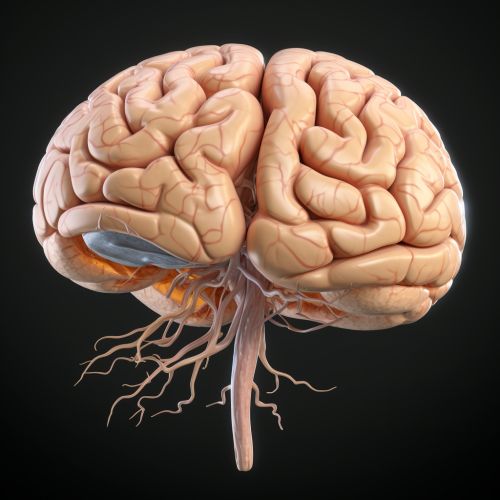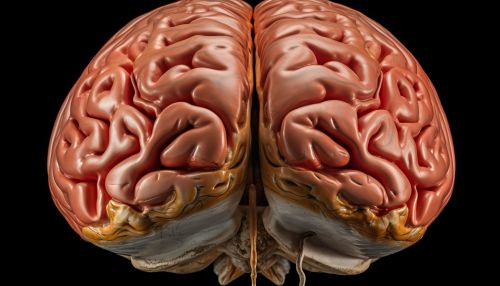Inferior frontal gyrus
Anatomy
The inferior frontal gyrus (IFG) is a gyrus of the frontal lobe in the human brain. It is located at the base of the precentral gyrus and is bounded by the lateral sulcus, the inferior precentral sulcus, and the lateral orbital sulcus. The IFG is divided into three parts: the pars opercularis, the pars triangularis, and the pars orbitalis. Each of these parts has unique cytoarchitectonic features and functional roles.


Cytoarchitecture
The cytoarchitecture of the IFG is complex and varies across its three parts. The pars opercularis and pars triangularis are part of Brodmann area 44 and Brodmann area 45, respectively, which together form Broca's area. These areas are characterized by a dense layer of pyramidal neurons in layer III, a feature associated with areas involved in higher cognitive functions. The pars orbitalis, on the other hand, is part of Brodmann area 47 and is characterized by a less dense layer of pyramidal neurons.
Function
The IFG is involved in a wide range of cognitive functions. The pars opercularis and pars triangularis, which form Broca's area, are primarily involved in language production. They are also implicated in other functions such as working memory and cognitive control. The pars orbitalis is associated with semantic processing, decision making, and social cognition.
Clinical significance
Damage to the IFG can result in a variety of cognitive deficits. Lesions in Broca's area can cause Broca's aphasia, a condition characterized by difficulty with speech production but preserved comprehension. Damage to the pars orbitalis can lead to deficits in decision making and social cognition, which can manifest as impulsivity or inappropriate social behavior.
Research
The IFG has been the focus of extensive research in cognitive neuroscience. Functional neuroimaging studies have shown that the IFG is activated during tasks that require language production, working memory, and cognitive control. These findings have contributed to our understanding of the functional organization of the frontal lobe and the neural basis of cognition.
